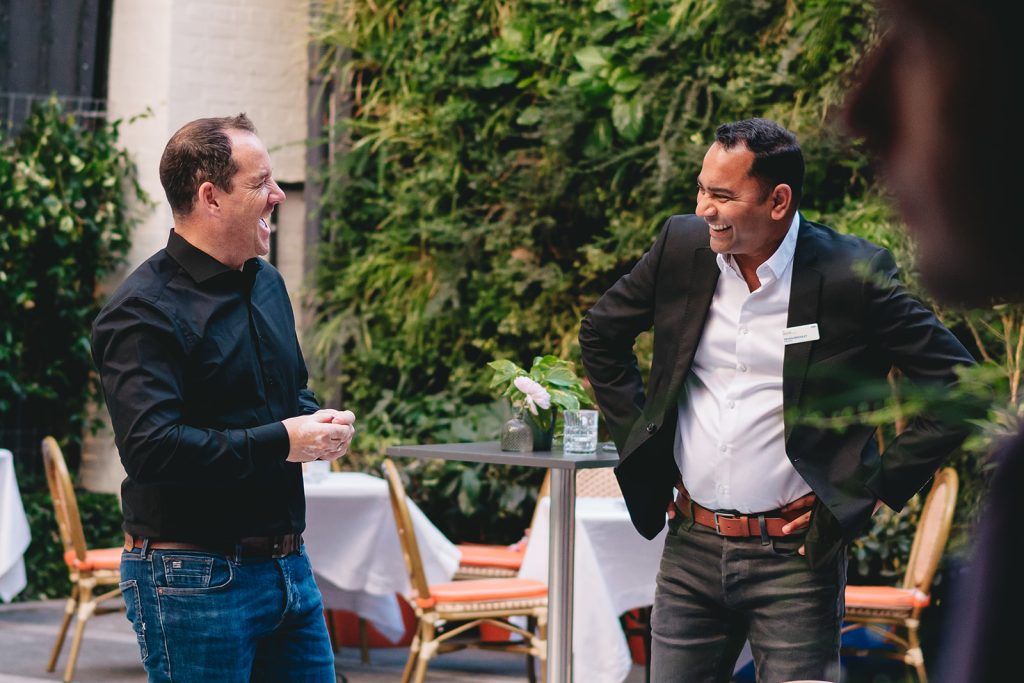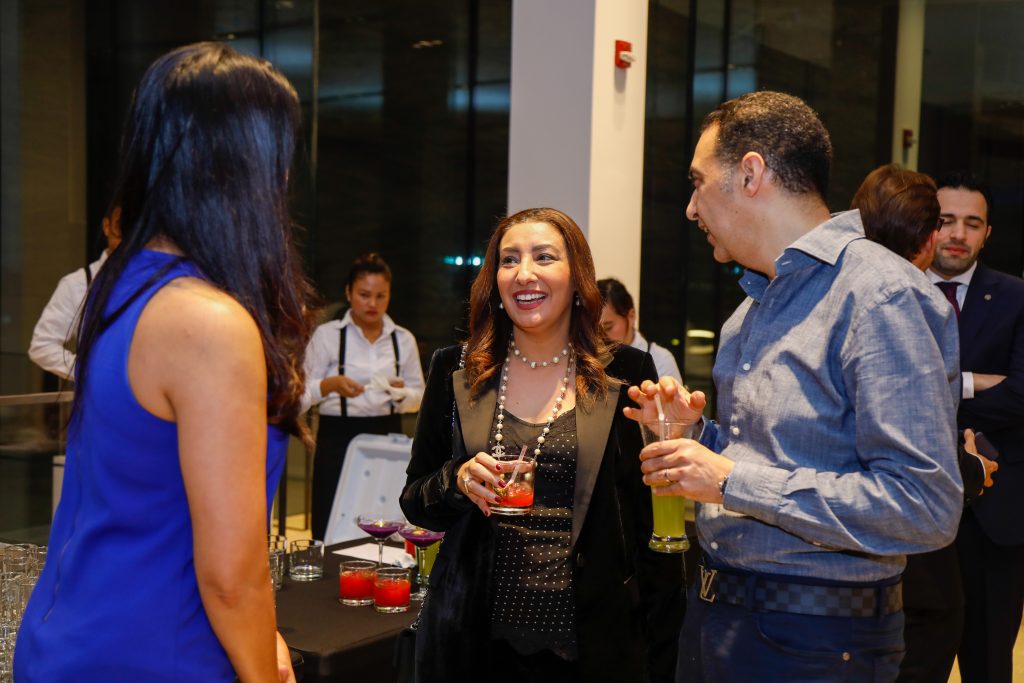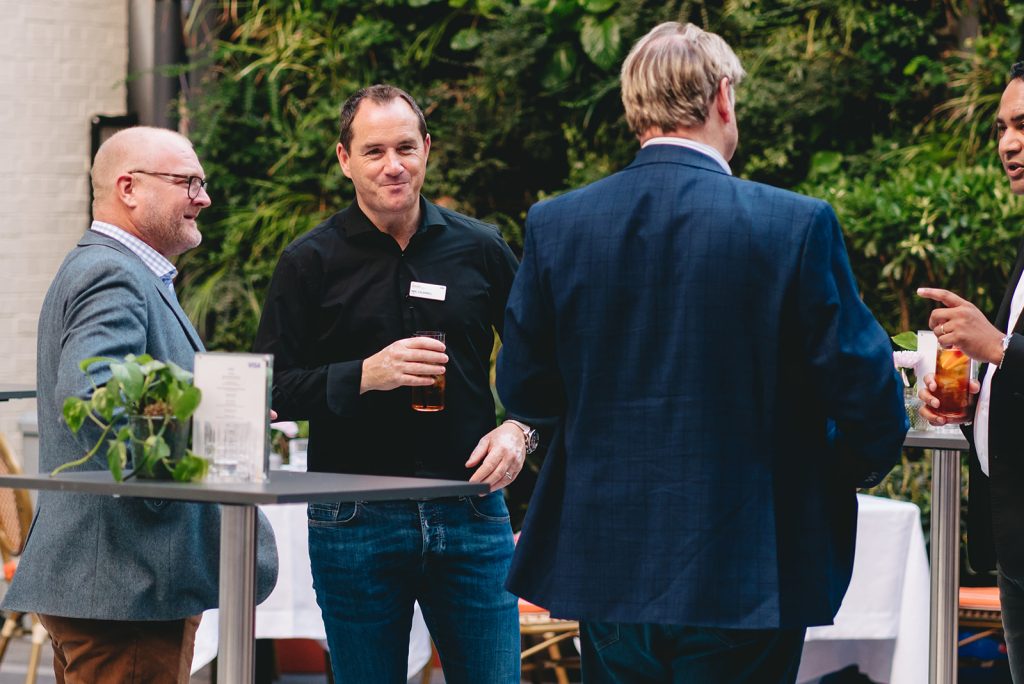You’ve just arrived at a highly anticipated corporate event, name tag pinned proudly to your lapel. The buzz of conversation fills the air. As you scan the room, you can’t help but feel a mix of excitement and trepidation. Who should you approach first? How do you break the ice? And more importantly, how do you ensure that the connections you make tonight will be meaningful and lasting?
If this scenario feels all too familiar, you’re not alone. Networking remains a cornerstone of professional growth and business development. Yet, for many, it’s a skill that doesn’t come naturally. The art of creating genuine connections in a room full of strangers can feel like the stuff of nightmares.
As an event planner or business leader, you know the success of your event hinges not just on the quality of your speakers or the elegance of your venue but also on the valuable connections your attendees make. So, how do you ensure your delegates don’t just survive networking but thrive?
What if there was a way to transform these networking opportunities from awkward small talk into powerful catalysts for business growth? What if you could create an environment where your delegates walk in confident they’ll leave with valuable connections and potential partnerships?
At Noble Events, we’ve spent 16+ years mastering the art of creating effective networking opportunities. With over 185 events delivered annually, we’ve seen firsthand how a strategic approach can take a corporate event from good to unforgettable. In this blog, we’ll pull back the curtain and share our approach to turning networking from a casual afterthought into a strategic, impactful component of your corporate events. Whether you’re planning a large-scale conference, an intimate luxury retreat, or a dazzling product launch, you’ll discover how to create networking opportunities your delegates will rave about long after the event ends.
Designing networking activities for corporate events
Creating a networking nirvana doesn’t have to be the stuff of fairytales – but it also doesn’t just happen by chance. It requires careful planning and execution and an event design with strategic networking in mind. Here’s how you can design networking activities that really work:
- Know your audience: Before you even think about icebreakers or networking games, take the time to understand your delegates. Are they C-suite executives, business owners or up-and-coming professionals? What industry are they from? What are their goals for attending the event? This knowledge will arm you with the knowledge you need to create the right kind of networking opportunities.
- Set the stage: The physical environment plays a crucial role in facilitating networking. A mix of open spaces for mingling and quieter nooks for more in-depth conversations often works wonders. Consider creating themed areas where delegates can gather to discuss specific industry topics – this can lead to more focused conversations and deeper connections.
- Break the ice, creatively: Forget the tired “tell us your name and one interesting fact” routine. Think about icebreakers that are both fun and relevant to your event’s theme. For instance, at an automotive industry event, you could organise a “Car Component Speed Dating” activity. Delegates could be given car parts and tasked with finding their “matching component” in the room, sparking conversations about industry innovations along the way.
- Leverage technology: Why not use technology to enhance face-to-face networking? Consider using event apps with features like attendee matching based on interests or goals. You could even allow delegates to book ‘brain dates’ – short, focused meetings with peers who have complementary expertise or interests.
- Structure for success: While organic networking is valuable, don’t be afraid to add structure. Guided networking sessions can be very effective. For a luxury brand event, you might consider setting up exclusive experience stations on topics like fine wines, art collecting, or space tourism hosted by experts. This allows attendees to connect over shared interests beyond their appreciation for, say, luxury cars, to encourage deeper, more authentic relationships in a structured yet elegant setting.
- Make it memorable: The most effective networking activities are those that delegates remember. For a tech startup conference, consider a ‘Pitch & Match’ session. Entrepreneurs could have 60 seconds to pitch their ideas, followed by a structured networking period where interested investors and potential collaborators could connect. It’s not just networking – it becomes a valuable experience.
The goal isn’t just to get people talking – it’s to create an environment where fruitful connections can flourish.

Facilitating meaningful networking connections at conference events
Conferences are a networking goldmine, bringing together diverse professionals with shared interests. However, their scale and pace can sometimes overwhelm attendees, making meaningful connections challenging. The key here is to create structured opportunities within the busy conference schedule. Here’s how to make sure your conference doesn’t just educate, but builds relationships delegates will thank you for:
- Strategic seating: Mix up seating arrangements during sessions. Use table numbers or colour-coded badges to guide people to sit with new faces each time. This simple trick can spark unexpected conversations and collaborations.
- Networking concierge: Designate staff members as ‘networking concierges’. They can help introduce people with similar interests or complementary business needs, making those first connections easier for attendees.
- Topic tables: During breaks, set up themed discussion tables. Attendees can choose topics they’re interested in, ensuring conversations are relevant and engaging right from the start.
- Digital matchmaking: Utilise event apps that allow attendees to create profiles and match with others based on interests or goals. This tech-forward approach can help break the ice before people even meet in person.
- Speaker mix & mingle: After keynote speeches, host small group sessions where attendees can discuss the presentation with the speaker. This not only enhances learning but creates a shared experience for attendees to bond over.
You want to try to create an environment where connections happen naturally and productively. By implementing these strategies, you can transform your conference from a simple information exchange into a hotbed of new ideas and collaborations.
Icebreaker ideas for corporate events to encourage networking
The mere mention of “icebreakers” can send shivers down the spines of even the most seasoned professionals. Awkward silences, forced laughter, and the dreaded “tell us an interesting fact about yourself” come to mind. But icebreakers don’t have to be a corporate form of torture. When done right, they can actually be (dare we say it?) enjoyable, energising and set the tone for your entire event.
The key is to choose activities that create an atmosphere of openness and engagement. Here are some fresh ideas to kick-start networking at your next corporate event that won’t make your delegates want to hide under the nearest table:
- Two truths and a lie, professional edition: Attendees share two true facts, and one lie about their professional life or industry. Others guess which is the lie. This encourages people to share interesting aspects of their work while adding an element of fun into the mix. For example, “I once closed a million-dollar deal over a game of golf,” “I’ve worked in three different continents,” and “I invented a new type of ergonomic office chair.”
- Rapid-fire roundtable: Divide attendees into small groups of 4-6 people. Each person gets 60 seconds to share their biggest professional challenge. After everyone shares, the group spends 5 minutes brainstorming solutions. This not only breaks the ice but also provides immediate value through collaborative problem-solving.
- Industry bingo: Create bingo cards with squares representing different professional experiences or skills relevant to your industry. For example, “Has worked on an international project,” “Speaks more than two languages,” “Has published a paper or article.” Attendees mingle to find people matching each square, encouraging diverse interactions and discussions about professional experiences.
- Future headline: Provide attendees with mock newspaper templates. Ask them to write a headline they’d like to see about their company or industry in 5 years. For instance, “Company X Achieves Carbon Neutrality” or “Industry Y Revolutionises Customer Experience with AI.” They then find others with similar visions to discuss how to make these headlines a reality. This sparks conversations about industry trends and potential collaborations.
- Skills swap: Ask attendees to write down one skill they can teach and one they want to learn on their name tags. For example, “Can teach: Data Visualisation, Want to learn: Public Speaking.” This creates natural talking points and potential for future collaborations. You can also facilitate a few quick skill-sharing sessions where attendees teach each other mini-lessons.
The best icebreakers align with your event’s goals and audience. Choose activities that not only break the tension but also provide value and set the stage for meaningful networking throughout your event.

Creating inclusive networking opportunities
It’s important to remember that preferences and comfort levels vary widely among attendees. A truly successful event offers diverse opportunities for connection, catering to different communication styles and social preferences. Here’s how to create an inclusive networking environment:
- Varied spaces: Offer a mix of environments for networking. Include open areas for larger group interactions, as well as quieter spaces for more intimate conversations. This allows attendees to choose settings that match their comfort level.
- Diverse session formats: Incorporate a range of session types – from large group discussions to smaller breakout groups and one-on-one meeting opportunities. This variety ensures that all attendees have chances to participate in ways that suit their preferences.
- Structured and unstructured time: Balance scheduled networking activities with free time. Some attendees thrive with clear objectives, whilst others prefer organic interactions. Providing both options caters to different networking styles.
- Digital connections: Leverage event apps or online platforms that allow attendees to connect digitally before, during, and after the event. This option can help break the ice and give people an additional communication channel.
- Opt-in activities: Offer voluntary networking activities or programmes. For example, a ‘networking partner’ system where interested attendees can be paired up for mutual support. This allows people to choose their level of involvement in organised networking.
- Quiet zones: Designate specific areas as ‘quiet zones’ where attendees can retreat for reflection, work, or low-key conversations. These spaces provide a comfortable setting for those needing a break from high-energy interactions.
- Facilitated networking: Consider having staff or volunteers available to facilitate introductions or guide conversations. This can be helpful for attendees who might find it challenging to initiate interactions on their own.
All events should strive to create an inclusive environment where all attendees feel comfortable and empowered to make meaningful connections. By offering a variety of networking options, you ensure that everyone has the opportunity to engage in ways that feel natural and valuable to them, ultimately leading to a richer, more rewarding event experience for all.
The impact of networking on business growth and brand loyalty
Networking isn’t just about collecting business cards or making small talk over canapés. When done right, it can be a powerful catalyst for business growth and a key driver of brand loyalty. Let’s break down why connections made at your events can have a lasting impact:
- Business opportunities: Every conversation is a potential gateway to new business. A Harvard Business Review study found that face-to-face requests are 34 times more successful than emails. Your event could be the birthplace of game-changing partnerships or lucrative deals.
- Knowledge exchange: Networking facilitates the exchange of fresh ideas and industry insights. This intellectual cross-pollination can spark innovation, helping businesses stay ahead of the curve in rapidly evolving markets.
- Brand advocacy: Positive networking experiences create emotional connections to your brand. Attendees who have meaningful interactions at your events are more likely to become brand advocates, spreading positive word-of-mouth experiences, ultimately enhancing your reputation.
- Customer retention: For B2B companies, events that facilitate networking can significantly boost customer retention. According to a study by Bain & Company, increasing customer retention rates by 5% can increase profits by 25% to 95%.
- Talent acquisition: Networking events aren’t just about external connections. They’re also a prime opportunity for identifying potential talent, which can be crucial for business growth in competitive industries.
By prioritising effective networking at your events, you can cultivate an ecosystem of growth, loyalty, and opportunity for all involved.

Measuring the success of networking activities at corporate events
After putting in so much effort to create the perfect networking environment, you will want to know if it’s paid off. Measuring the success of networking activities can be tricky, but it’s crucial for continual improvement. Here are some effective ways to gauge the impact of your networking initiatives:
- Post-event surveys: Ask attendees specific questions about their networking experience. Did they make valuable connections? How many new contacts did they make? This provides direct feedback on the effectiveness of your networking activities.
- App data analysis: If you’re using an event app, analyse the data on connections made, messages sent, or meetings scheduled. This quantitative data can give you a clear picture of engagement levels.
- Social media metrics: Track event hashtags and mentions. An increase in social media activity can indicate successful networking and high engagement.
- Follow-up tracking: Conduct a follow-up survey a few months after the event. Ask about any business deals, collaborations, or ongoing relationships that resulted from event connections.
- Repeat attendance rates: High repeat attendance at your events can strongly indicate that attendees find value in your networking opportunities.
The goal is continuous improvement. Use these metrics to refine your approach and create even more impactful networking opportunities at future events.
Successful networking isn’t about forcing interactions or collecting the most business cards. It’s about creating an environment where genuine connections can flourish naturally. When done right, these connections can drive business growth, enhance brand loyalty, and, ultimately, transform your event.
So, as you plan your next corporate event, challenge yourself to think beyond the usual networking hour. How can you create opportunities for meaningful connections throughout your event? How can you measure and continually improve your networking initiatives? By applying these strategies and continuously refining your approach, you can create events that stick in the minds of your delegates long after the last guest has left.
Ready to transform your corporate events with meaningful networking opportunities? Let’s start a conversation and explore how we can make your next event truly exceptional.
